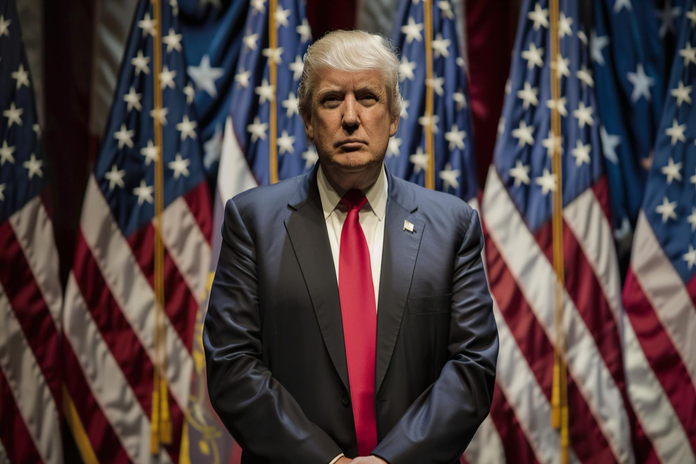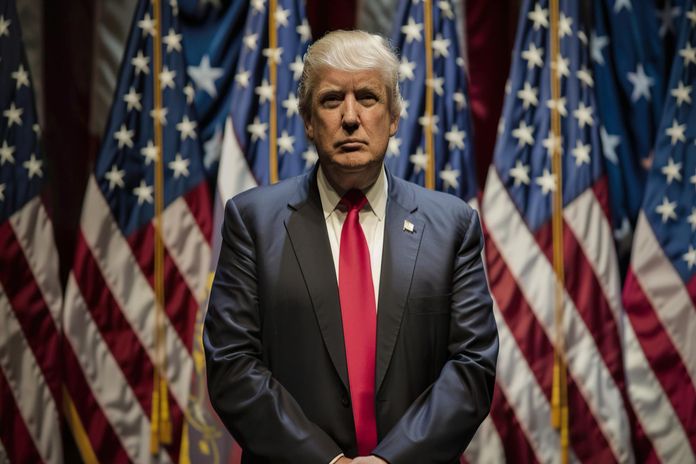Trump Crypto Venture Sparks Investor Concerns

Former U.S. President Donald Trump and his family have unveiled a bold new initiative: a Trump crypto venture called World Liberty Financial. This project, co-founded by Trump and his sons, aims to capitalize on the booming cryptocurrency market. But while the marketing is strong, experts are cautioning investors about potential pitfalls.
What Is the Trump Crypto Venture?
Unlike many high-profile cryptocurrency projects that focus on Bitcoin (BTC) accumulation, World Liberty Financial is centered on WLFI tokens. These tokens are scheduled to become tradeable in September. The venture has reportedly raised $1.5 billion through a partnership with ALT5 Sigma (CNSX:ALTS), a publicly traded blockchain firm.
As part of the arrangement, Eric Trump has taken a seat on ALT5 Sigma’s board. The Trump family owns a large stake in WLFI and will receive three-quarters of proceeds from token sales.
Experts Raise Red Flags
Despite the hype surrounding the Trump crypto venture, several financial analysts have expressed concerns. WLFI tokens provide very limited control over the USD1 stablecoin that the company promotes, leaving questions about their intrinsic value.
Critics have labeled the business model an “infinite money glitch,” referring to a practice of issuing new tokens or shares at premium prices to acquire assets. While this can generate quick capital, Owen Lamont, portfolio manager at Acadian Asset Management, told The Wall Street Journal:
“This phenomenon violates every principle of finance.”
Experts warn that this strategy often leads to overvaluation and leaves investors holding risky assets.
Pattern of Trump-Backed Projects
Skepticism about the Trump crypto venture is also fueled by the performance of previous Trump-branded financial ventures. Trump Media & Technology Group (NASDAQ:DJT), operator of the Truth Social network, has seen its stock tumble roughly 73% from its peak.
Similarly, the Trump-themed $TRUMP memecoin fell about 90% from its highs, and the $MELANIA token has performed even worse, according to analysts.
One exception has been Trump’s Digital Trading Cards NFT collection, which features cartoonish depictions of the former president as a superhero, astronaut, and sports icon. Initially sold for $99, the NFTs’ floor price now exceeds $200. However, some buyers who paid as much as $800 for individual cards are still facing steep losses.
Why Investors Are Cautious
The biggest concern with the Trump crypto venture is that it may serve more as a political loyalty signal than a true investment opportunity. As The Wall Street Journal noted, “Clearly the main reason to want WLFI is to show public support for Trump.”
Without clear use cases, strong governance structures, or transparency around token economics, WLFI could face the same volatility and long-term struggles as previous Trump-backed digital assets.
Will the Trump Crypto Venture Succeed?
Despite skepticism, the Trump brand still has strong appeal among supporters. If WLFI gains traction among his political base and manages to provide meaningful utility, it could carve out a niche in the crowded crypto market.
However, experts recommend that potential investors approach WLFI with caution, conduct thorough due diligence, and avoid allocating funds they cannot afford to lose. As history shows, speculative projects tied to celebrity figures often experience extreme volatility.
Bottom Line
The Trump crypto venture with WLFI tokens is generating headlines and raising capital quickly, but the red flags are hard to ignore. Between its concentrated benefit to the Trump family, its unclear token utility, and its resemblance to past overhyped projects, investors should remain vigilant.
For those considering WLFI, understanding the risks is critical. Whether this project becomes a success or another cautionary tale remains to be seen, but experts emphasize that sustainable growth in crypto requires more than branding—it needs real value and utility.
Featured Image: Freepik








